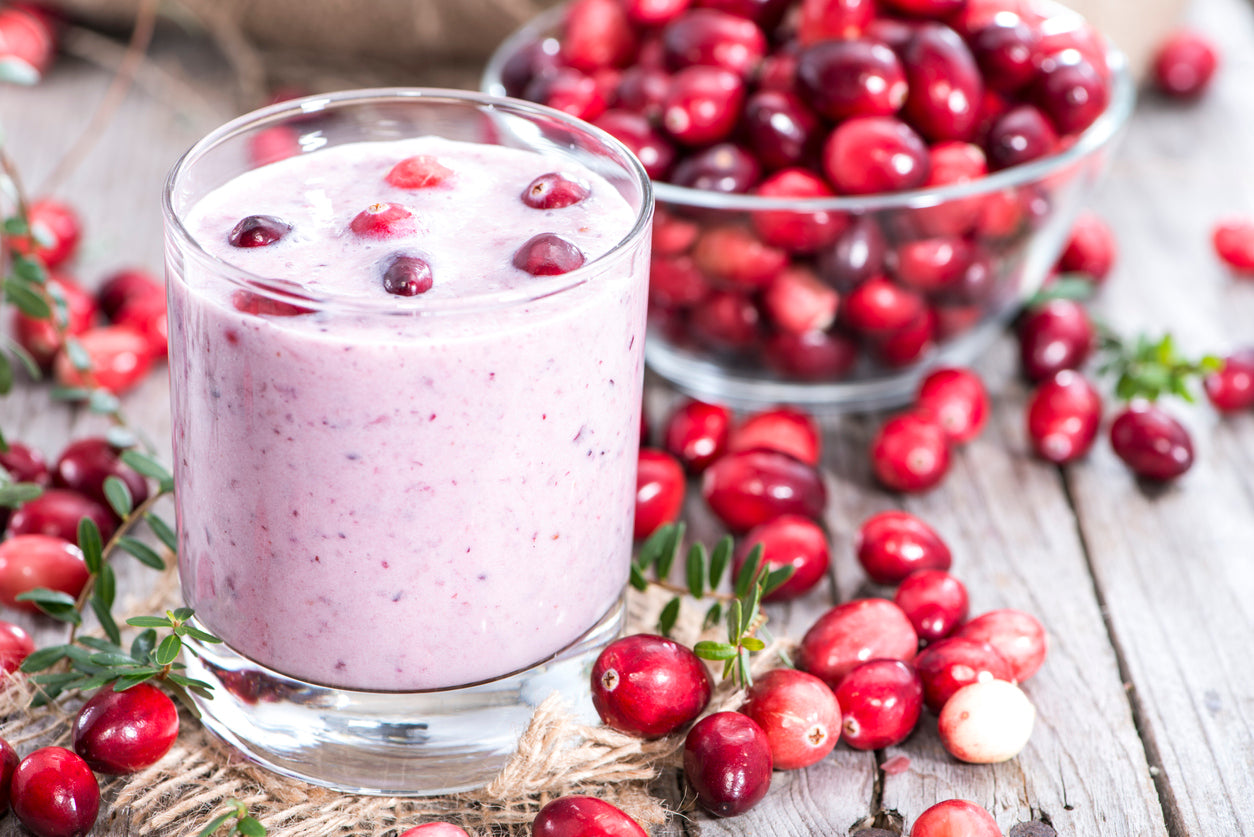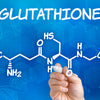“Cran-tastic”- 3 under-recognized health benefits of cranberries

Mention “healthful effects of cranberry juice,” and many people automatically think of cranberry’s well-known abilities to prevent urinary tract infections or UTIs. After all, cranberry constituents have been shown time and time again to inhibit UTI-causing bacteria from adhering to the cells of the uterine lining. But, focusing only on cranberries’ contributions to urinary health may cause you to miss out on their additional - and substantial - benefits.
It turns out that these tart little berries have health-supporting properties that extend to the cardiovascular and digestive systems - and may even help protect against certain types of cancer. How does the tiny, humble cranberry accomplish all this? Let’s check it out.
Consumption of cranberries can help reduce heart disease risk
Botanically known as Vaccinium macrocarpon, cranberries contain high levels of antioxidant and anti-inflammatory compounds, such as quercetin, myricetin, proanthocyanidins, ursolic acid, and peonidin. These flavonoids and tannins allow cranberries to fight oxidative damage and support heart health. In addition, cranberries contain healthy amounts of both soluble and insoluble fiber.
Researchers at Harvard Medical School report that higher-fiber diets are associated with lower body weight, lower blood pressure, lower blood sugar, and a reduced risk of dying from heart disease and stroke. Cranberries and cranberry juice have also been shown to increase beneficial HDL cholesterol, decrease LDL cholesterol, increase arterial flexibility in people with heart disease, and reduce levels of the pro-inflammatory molecule homocysteine. A new, placebo-controlled clinical trial involving adult male participants published in Food and Function reveals that a month of taking 9 grams of freeze-dried cranberry powder daily (the equivalent of a daily cup of fresh cranberries) improved heart and blood vessel function.
Discourage gastric ulcers and stomach cancer with cranberries
Cranberries also help to inhibit H. pylori bacteria, which is implicated in gastric ulcers and stomach inflammation. In much the same way that cranberry proanthocyanidins discourage the adhesion of E. coli in the uterine lining, they discourage H. pylori bacteria from attaching to the stomach lining. This reduction in the “stickiness” of the bacteria allows it to be flushed more easily from the body.
And it’s not necessary to swig large quantities of cranberry juice to accomplish this. One study showed that drinking two cups of cranberry juice daily significantly reduced the incidence of H. pylori infection. By the way, ulcers caused by H. pylori are a risk factor for stomach cancer. It’s good to know that sipping a mere two cups of tasty cranberry juice a day can lower your odds of developing this potentially life-threatening disease!
Cranberries are a great source of fiber, essential vitamins and minerals
A cup of raw, unsweetened cranberries contains a modest 46 calories, 12.2 grams of carbohydrates, 4.6 grams of dietary fiber, about 0.5 grams of plant-based protein, and 4 grams of natural sugars in the form of sucrose, glucose, and fructose. Where cranberries really shine, however, is in their generous content of antioxidant vitamin C, needed for maintenance of skin and muscle. The vitamin C in cranberries is also needed to produce collagen, which is required for healthy arteries. Antioxidant vitamin E, vitamin K1 - required for proper blood clotting - and the antioxidant mineral manganese are also present in good supply in cranberries.
But the true “hidden health superpower” in cranberries may well be their content of copper. Dietitians report that this important trace mineral is often lacking in the Standard American Diet (aptly abbreviated as SAD). In an older but still well-regarded study published in the Journal of Nutrition, researchers noted that people with ischemic heart disease have lower levels of copper in their hearts and white blood cells. Clinical studies have also shown that copper deficiency is linked with higher blood pressure, improper metabolism of fats, and abnormal electrocardiograms.
“Jazz up” the menu with craisins
Dried cranberries, known as “craisins,” add chewiness, tangy flavor, and bright color to trail mixes, granolas, and salads. Add them to oatmeal, yogurt, or cottage cheese, or bake them into muffins, cobblers, and breads. However, if you use dried cranberries for cooking, you should rehydrate them by soaking them in hot water for about 20 minutes.
One definite “plus” of craisins is that they contain cranberry skins - which are particularly high in antioxidant and anti-inflammatory plant chemicals such as ursolic acid.
If you’re using fresh cranberries in a cranberry sauce or jelly recipe, make sure to choose those that are fresh, firm, and unwrinkled.
If fresh cranberries aren’t in season, don’t despair. You can always use canned or frozen varieties.
If you prefer cranberry juice, look for an organic, unsweetened brand that contains 100 percent cranberry juice. For maximum benefit, avoid cranberry “drinks,” “cocktails,” and “blends.” One drawback of cranberry juice, however, is that it contains virtually no dietary fiber.
Cranberry is available in supplementary powdered form, with holistic healthcare providers typically recommending 600 mg to 800 mg daily. Naturally, check first with your holistic doctor before supplementing.
Cranberries, “craisins,” and cranberry juice make fantastic additions to your healthy diet. Enjoy their tart flavor - as you reap their cardiovascular, digestive, and nutritional benefits.
Sources for this article include:






